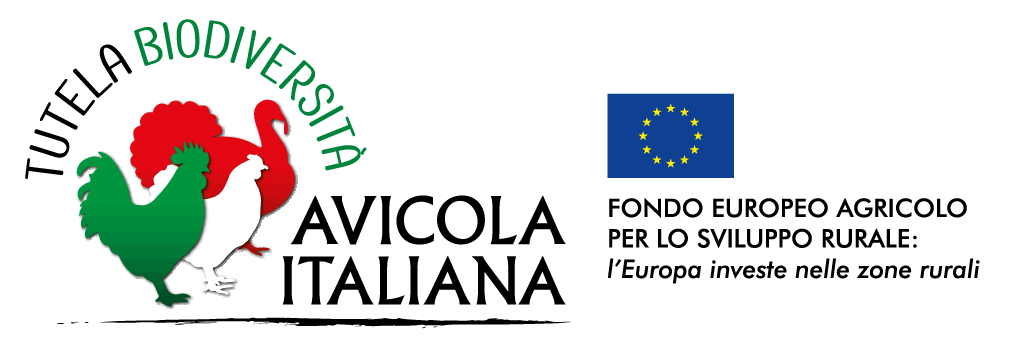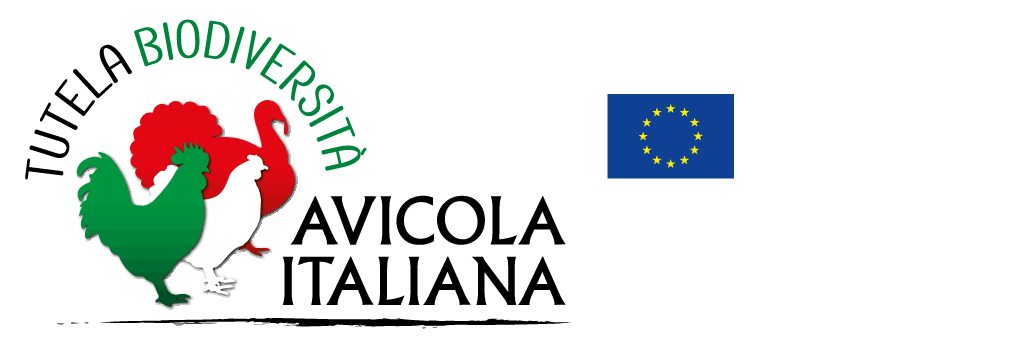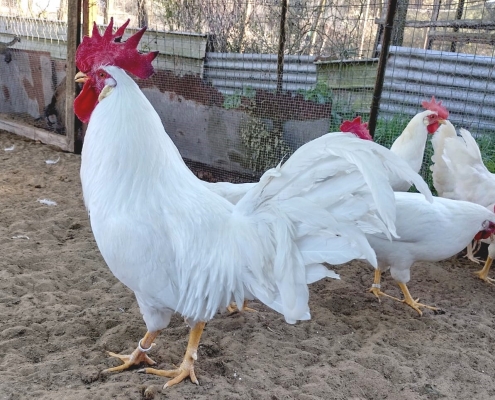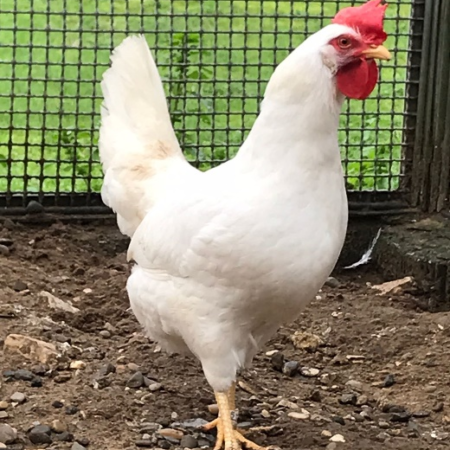Livorno
Synonyms or local names: Livornese
Geographic origin: Central Italy
Geographic distribution: Marche, Lazio, Tuscany and Umbria; spread all over the world in many different colours
Estimated total population size: 1841 (Castillo et al., 2021)
Extinction risk status (FAO, 1998): Not at risk
Any other specific information: Light breed, excellent producer of white-shell eggs
Historical origin of the breed
Livorno, or Livornese, is a breed originated from central Italy, especially from Tuscany rural areas, where it was largely prevalent, because of its excellent performances, fast growing rates, and marked rusticity. By 1800s, even though it hadn’t been recognised as a standardised breed and no poultry association exixted in Italy, Livorno had already developed uniform morphological traits. It took its name from the city of Livorno. From here, it sailed in the first half of 1800s to reach the USA. Around 1835, N.F. Ward imported golden coloured chickens, that soon interested the breeders, being beautiful and at the same time excellent egg-layers, with a poor brooding aptitude. In 1868 the white variety, now called by the American “Leghorn”, left for Great Britain, and two years later the golden variety was also imported. Breeders were enthusiastic about the new breed, so much that in 1876 the “Leghorn Club” was instituted, representing the first club of an avian breed in the history of poultry farming. Livorno breed had officially been recognized as a pure breed. Livorno was successful among breeders of every country, that tried to improve it through careful selection, so that, by the half of the XX century, every country had its own Livorno standard. In the following years, the main types were defined: the German Livorno, called Italiener, the American Livorno, the English Livorno and even the Dutch Livorno.
At the beginning of the 1900, the high quality of this breed began to be appreciated also in Italy, where Livorno cocks were used to improve egg production in local hens. In the last years of the 1900 some Italian breeders have patiently selected the breed to recover the original Italian chicken.
Bibliography
Manuale STANDARD ITALIANO DELLE RAZZE AVICOLE (ITALIAN STANDARD OF POULTRY BREEDS Manual), FIAV, 2013-14.
Qualitative morphological traits
Feather morphology: Normal
Feather distribution: Normal
Plumage structure: Abundant plumage, with wide feathers with stiff shaft, adherent to the body. Thick down.
Plumage colours:
Main colours: White, Black, Gold (Collo oro), Silver (Collo argento)
Other colours: Blue, Fawn, Orange (Collo argento), White Gold (Collo oro bianco), White Columbia, Barred, Splash
Colour features:
Single colour, without sexual dimorphism: White, Black, Blue, Fawn
Bi-colour, with sexual dimorphism: Gold, Silver, Orange, White Gold, White Columbia, Barred
Bi-colour, without sexual dimorphism: Splash
Colour pattern:
White: pure white, brighter in the male. White down.
Black: intense black, with strong green sheen. Grey to black down.
Blue: uniform pigeon blue with slight feather edging. Light blue down.
Fawn: intense and uniform golden yellow, very brilliant in the male. Bronze hues in the tail. Intense fawn shafts (darker in the primaries). Fawn down.
Gold: in the male, head intense gold-yellow, neck hackle gold-yellow, lighter in the end with black striping and green lustre. Back and shoulders dark brilliant red. Saddle feathers gold-yellow with black striping and green lustre. Flight coverts black with metallic blue/green sheen. Primaries black with narrow brown edging. Secondaries inner colour and tips black, outer colour brown. Breast black with green sheen. Belly and legs black. Tail black with strong green sheen. Greyish down. In the female, gold-yellow head, gold-yellow neck hackle with black striping and green lustre. Primaries black, with narrow brown edges with peppering. Secondaries inner colour black and outer colour is brown with peppering. Breast is salmon, darker in the upper part. Belly and legs grey/brown. Remainder of plumage brown-gold, with fine uniform brown peppering. Tail black with the main tail coverts marked like the rest of the plumage.
Silver: in the male, silver-white head and silver-white neck hackle with black striping with green sheen. Back, shoulders and coverts white. Saddle hackles silver-white with black striping with green sheen. Main wing coverts black with narrow white edging. Secondaries inner colour and tips black, outer colour white. Breast black with green sheen and no white. Belly and legs black. Tail black with strong green sheen. Down greyish. In the female, silver-white head and silver-white neck hackle with black striping with green sheen. Primaries black with narrow silver-white outer edging with peppering. Secondaries inner colour and tips black, outer colour silver with peppering. Breast salmon, darker in the upper part. Belly and legs grey. Tail black with the main tail coverts marked like the rest of the plumage. Remainder of plumage silver-grey with fine uniform black peppering.
Orange: in the male, head orange and neck hackle light orange with black striping with green sheen. Back, shoulders, and coverts dark orange/red. Saddle hackles light orange with black striping with green sheen. Main wing coverts black with metallic green/blue sheen. Primaries black with narrow white/yellowish outer edging. Secondaries inner colour and tips black, outer colour cream shading to brown towards the end. Breast black with green sheen. Belly and legs black. Tail black with green sheen. Down greyish. In the female, the head dark orange and neck hackle yellow-light orange with black striping with green sheen. Primaries black with narrow light brown outer edging with peppering. Secondaries inner colour black and outer colour light brown with peppering. Breast salmon, darker in the upper part. Legs and belly grey. Tail black with the main tail coverts marked like the rest of the plumage. Remainder of plumage light brown with fine uniform black peppering.
White gold (Pile): in the male the main colour is cream white. Head red/orange and neck hackle light gold-yellow, darker towards the end, with cream-white striping. Back, shoulders, and coverts dark carmine-red, lighter towards the saddle. Saddle hackles orange to light orange, with thin cream white striping. Main wing coverts cream white. Primaries cream white. Secondaries inner colour and tips cream white, outer colour reddish-brown. Breast, belly, legs cream white. Tail cream white. In colour-rich animals, light black sprinkles can be found. Down cream white. In the female, head light gold-yellow, neck hackle light gold-yellow, with cream white striping. Breast and front of neck uniform intense salmon. Remainder of plumage cream white.
White Columbia: in the male, head white, and neck hackle white with wide black striping with green sheen. Saddle hackles white (slight black striping accepted). Tail black with green sheen, with white edging on lesser sickles. Remainder of plumage white. Down light grey. In the female, head white, neck hackle white with wide black striping with green sheen. Saddle hackles white (black striping accepted). Primaries and secondaries inner colour black and outer colour white. Tail black with black coverts with white edging. Remainder of plumage white.
Barred: in both male and female, every feather has a barred marking, with regularly alternating black and very light blue. In the male, widths of black and blue bars are the same, in the female black bars are wider. Feathers end with black tips.
Splash: in both male and female, plumage is off-white with blue, in some birds black, sprinkles, sometimes uneven, with blue ranging from very light to very dark. At hatching, splash chicks can be confused with white chicks, but the colour is genetically distinct.
Chick plumage colour: Yellow, grey, black, striped brown depending on the variety
Comb type: Simple comb, red, well developed and well upright in the male. In the female, it gracefully falls to one side after the second spike without covering the eye.
Comb spikes: Five spikes, regularly formed, wide at the base, with quite deep serrations. Except for the first, the spikes are of equal height and width and form a regular curve. The well-formed blade follows the line of the head without getting too close to the nape.
Ear-lobe colour: Pure white to ivory or cream white; oval, medium-sized, smooth, and well adherent to the face
Beak colour: Yellow, with possible blackish traces on the top, especially in the Blue and the Black; medium-lengthed, slightly curved
Iris colour: Red-orange
Skin colour: Yellow
Shank colour: Yellow
Shank feathering: Free from feathers
Bibliography
STANDARD ITALIANO delle RAZZE AVICOLE, FIAV, 2013-14.
Quantitative morphological traits
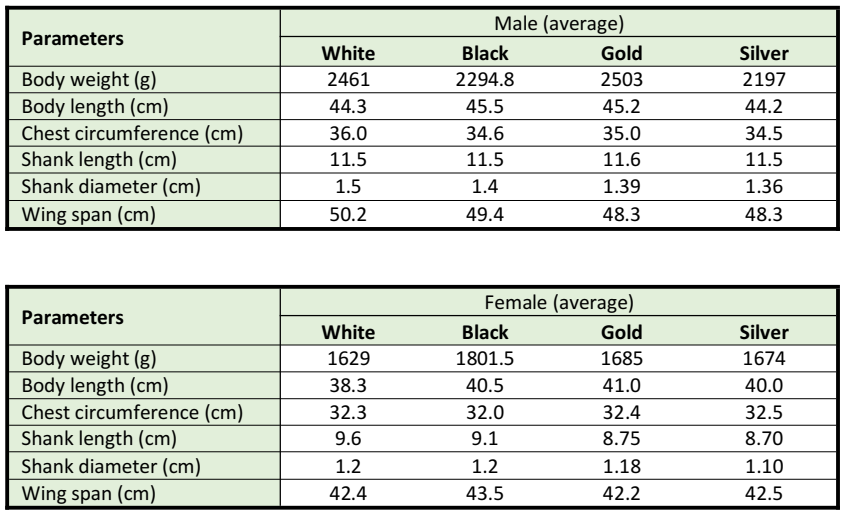
Genetic traits
Characterisation of the breed with Single Nucleotide Polymorphisms (SNPs)
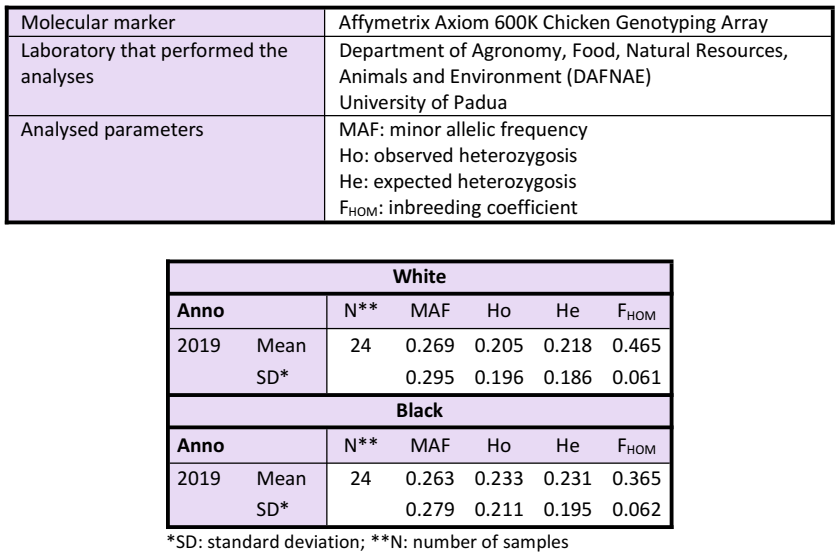
Characterisation of nucleus populations with microsatellites and mating plans
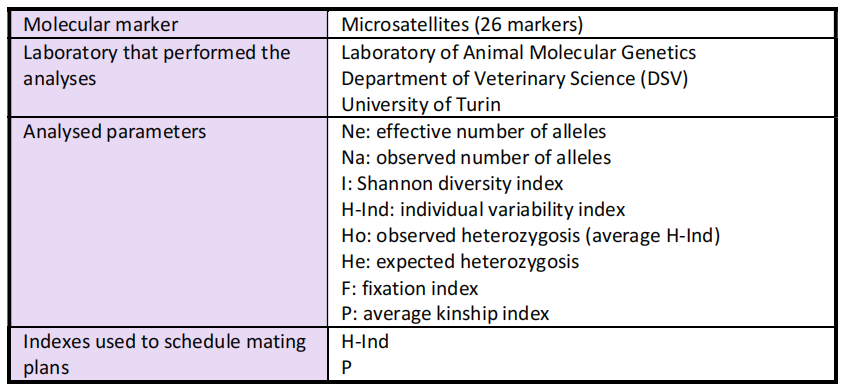
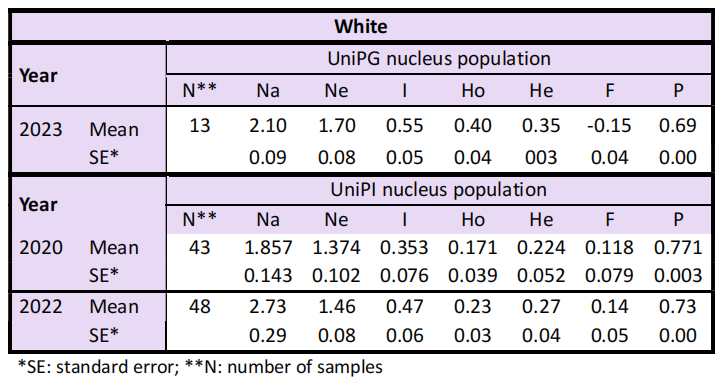
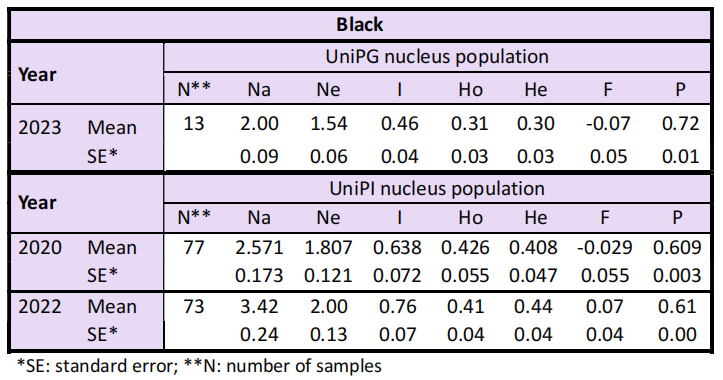


Reproductive and productive quantitative traits
Oviposition, brooding and incubation data

Egg-quality traits
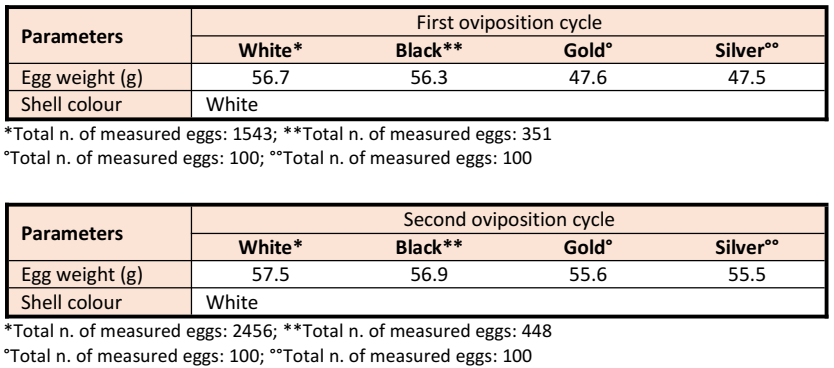

Reproductive traits
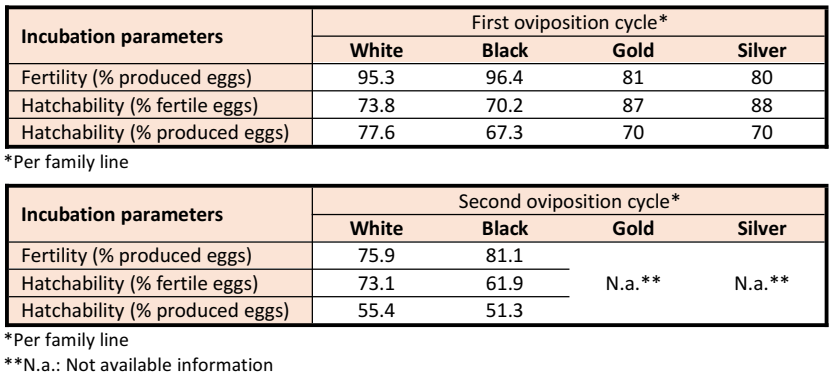
Body weight and growth data
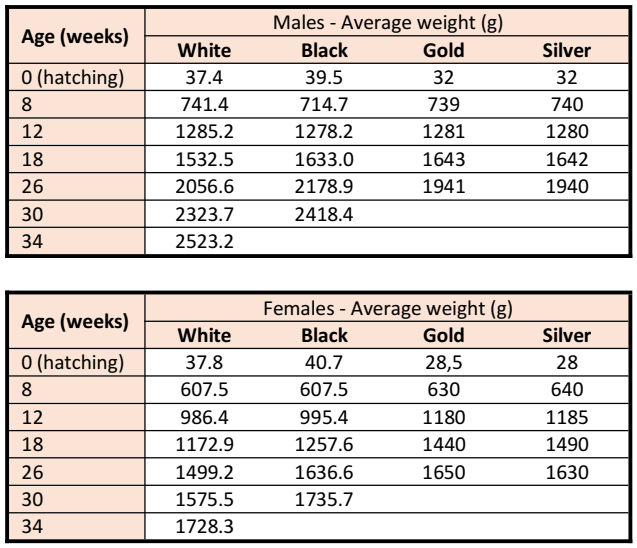
Mortality

Slaughter data
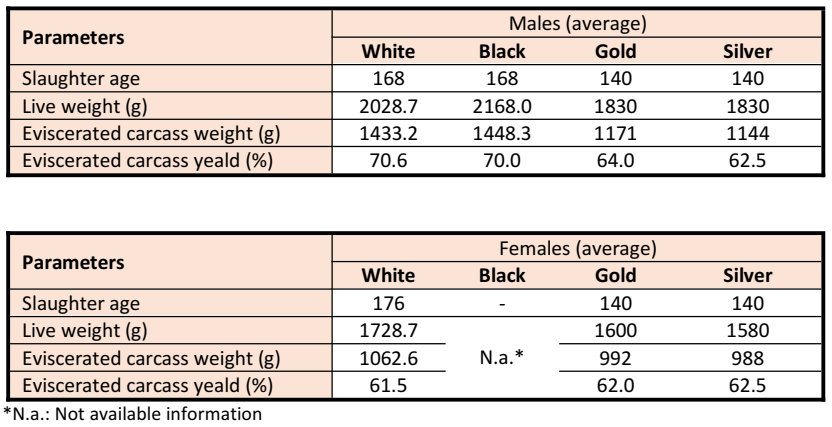
Rearing traits
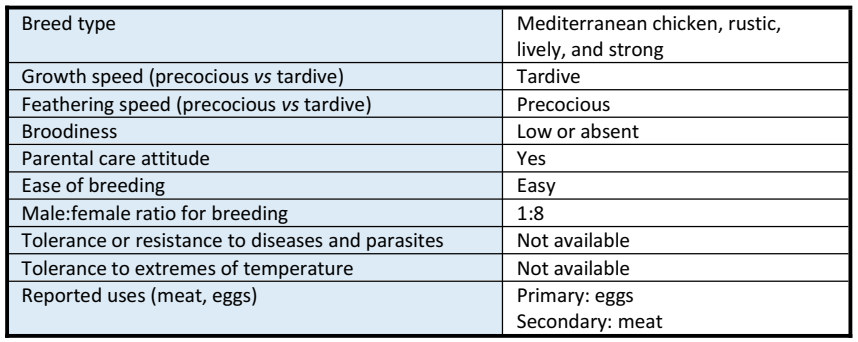
The presented data were registered in the nucleus populations of White, Black, Gold and Silver Livorno conserved at the University of Perugia (UniPG) and of White and Black Livorno conserved at the University of Pisa (UniPI).
The data are presented by colour.
Technical data sheet
(The layout of the data sheet is ready for the booklet format. Print on both sides of paper, selecting “flip on short edge”.)
Germplasm collection
The breed is conserved in our Cryobank with 166 semen doses from 43 donors.
Mating plan
Download the latest mating plans for the Livorno breed:
Latest update: February 6th, 2025
